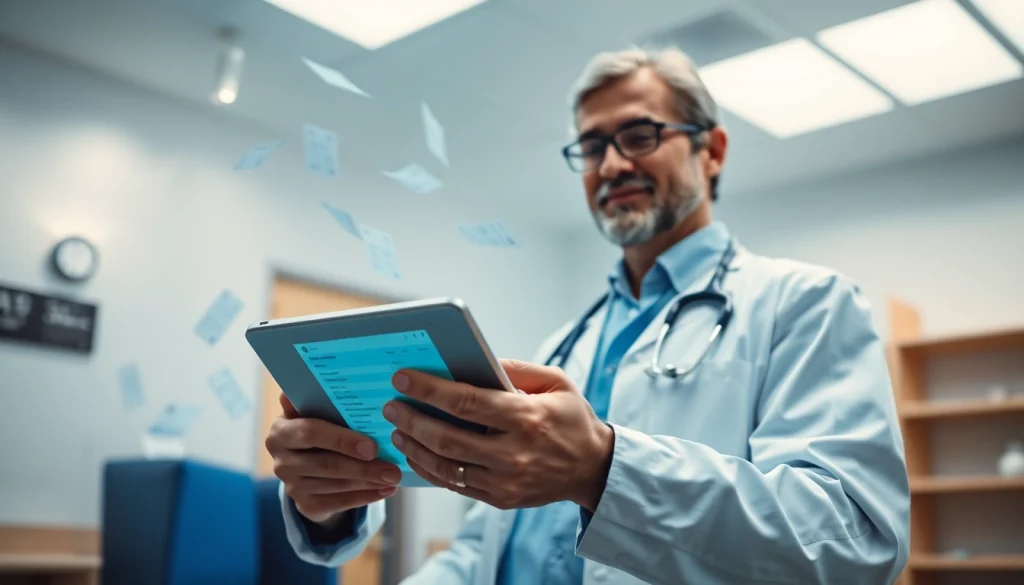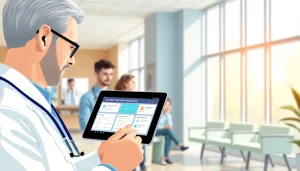
Introduction to E-Prescribing
Definition of E-Prescribing
E-prescribing, or electronic prescribing, is a modern healthcare solution that enables healthcare providers to create and transmit prescriptions to pharmacies electronically. Unlike traditional paper prescriptions, e-prescribing eliminates the reliance on handwritten orders and reduces the risks associated with manual processes. By leveraging digital tools, it allows for the accurate, secure, and timely transmission of prescription information directly to a pharmacy, enhancing the overall workflow of medical practices.
Importance of E-Prescribing in Healthcare
The shift towards e-prescribing holds significant importance in today’s healthcare landscape. With the increasing complexity of medication management and a growing emphasis on safety, e-prescribing minimizes the potential for errors that can arise from poor handwriting or misunderstood instructions. It also facilitates better communication between healthcare providers and pharmacies, which can lead to improved patient outcomes. Furthermore, as the healthcare system increasingly emphasizes patient-centric care, e-prescribing helps to streamline the patients’ experience and encourages better adherence to medication regimens. Understanding how does eprescribing work is essential for recognizing its transformative potential.
The Transition from Paper to Digital Prescriptions
The transition from paper prescriptions to electronic versions has been gradual yet impactful. Initially, the healthcare industry heavily relied on paper due to its simplicity and existing workflows. However, as technology advanced and digital literacy increased, providers began to seek alternative solutions to improve prescription accuracy and efficiency.
This transition accelerated with the advent of Electronic Health Records (EHR) systems, which integrated e-prescribing capabilities. Today, healthcare providers can easily prescribe medications directly from their EHR systems, thus fostering a more seamless workflow. The ongoing push for interoperability among various healthcare IT systems further supports this transition, allowing prescription data to be shared securely across platforms.
How Does Eprescribing Work?
The Technology Behind E-Prescribing
The technology behind e-prescribing combines software applications and electronic communication networks that facilitate the secure transmission of prescription information. Healthcare providers utilize EHR systems or standalone e-prescribing software to input medication details, which are then encrypted and sent through secure channels to the pharmacy.
Various standards and protocols, such as the Electronic Prescribing of Controlled Substances (EPCS), ensure that the transmitted data remains confidential and secure. Utilization of secure web applications, application programming interfaces (APIs), and health information exchanges (HIEs) further enhances the efficiency and safety of e-prescribing systems.
Process of Sending a Prescription Electronically
The process of sending an electronic prescription involves several key steps:
- Patient Consultation: During a patient visit, the healthcare provider and patient discuss the patient’s health condition and treatment options. Should medication be required, the provider selects the appropriate drug using the e-prescribing system.
- Prescription Creation: The provider inputs relevant prescription details into the EHR or e-prescribing software, including the drug name, dosage, and instructions for the patient.
- Electronic Transmission: Once the prescription is confirmed, the system encrypts the data and transmits it electronically to the designated pharmacy of the patient’s choice.
- Pharmacy Receipt: The pharmacy receives the electronic prescription, allowing for immediate processing. The system can automatically cross-check for drug interactions and allergies.
- Patient Notification: After processing, the pharmacy can notify the patient about the prescription’s availability for pickup or delivery.
Security Measures in E-Prescribing
Security is paramount in e-prescribing, given the sensitivity of medical data. Various measures are employed to protect patient information, including:
- Data Encryption: Encrypting prescription data ensures that even if intercepted, the information remains unreadable.
- Two-Factor Authentication: Providers typically utilize two-factor authentication to verify their identities before accessing e-prescribing systems.
- Audit Trails: Comprehensive audit trails track who accessed the information, when, and what actions were taken, ensuring accountability and enhancing security.
- Compliance with Regulations: E-prescribing systems comply with regulations such as the Health Insurance Portability and Accountability Act (HIPAA) and EPCS guidelines to protect patient privacy.
Benefits of E-Prescribing
Improved Accuracy and Reduced Errors
E-prescribing enhances the accuracy of medication orders, significantly reducing the chances of errors associated with handwriting or verbal orders. Research shows that legibility issues can contribute to prescription errors in a significant percentage of cases. By eliminating these manual errors, e-prescribing ensures that pharmacies receive clear and concise instructions, leading to safer medication dispensing.
Increased Efficiency for Healthcare Providers
Healthcare providers experience a substantial increase in efficiency with e-prescribing systems. The streamlined process allows for quicker prescription writing, reducing the time spent on the phone clarifying orders with pharmacies. Additionally, providers can easily track the status of prescriptions and access patients’ medication histories, facilitating informed clinical decisions.
Enhanced Patient Experience and Engagement
Patients benefit greatly from e-prescribing as it reduces wait times and improves convenience. E-prescriptions enable patients to receive their medications faster, as pharmacies can process orders with greater efficiency. Furthermore, some e-prescribing systems include patient communication features that remind patients to fill their prescriptions or provide educational materials about their medications, thus fostering higher levels of engagement.
Challenges in E-Prescribing
Understanding User Resistance
Despite its many advantages, some healthcare providers may be resistant to adopting e-prescribing systems. This reluctance can stem from concerns about learning new technologies or disruptions to established workflows. To mitigate this resistance, organizations can implement comprehensive training programs, highlighting how e-prescribing enhances productivity and ultimately improves patient care.
Integration with Existing Healthcare Systems
Integrating e-prescribing solutions with existing healthcare systems can be challenging. Compatibility issues, data migration complexities, and the need for interoperability among various software applications may arise. Careful planning and collaboration with IT departments can help address these integration challenges, ensuring a smoother implementation process.
Addressing Privacy and Security Concerns
Privacy and security concerns remain a priority in the realm of e-prescribing. Stakeholders must ensure that appropriate safeguards are in place to protect patient data from breaches and unauthorized access. Regular security audits, routine software updates, and adherence to compliance regulations will help organizations maintain robust security protocols and foster trust among users.
Future of E-Prescribing
Innovations in E-Prescribing Technology
The future of e-prescribing is poised for exciting innovations. Emerging technologies, such as artificial intelligence and machine learning, can enhance prescription management by predicting potential drug interactions or optimizing medication choices based on patient histories. Furthermore, the integration of mobile applications may allow patients to manage their prescriptions conveniently, thus improving adherence rates.
The Role of E-Prescribing in Telemedicine
As telemedicine continues to expand, e-prescribing will play a crucial role in facilitating remote consultations. Physicians can prescribe medications during virtual visits, overcoming geographical barriers and enhancing access to care. This intersection of telemedicine and e-prescribing creates unique opportunities for improving public health, particularly in underserved areas.
Expectations and Predictions for E-Prescribing Adoption
As healthcare systems evolve, e-prescribing is expected to see increased adoption across various settings. With ongoing emphasis on patient safety, efficiency, and data-driven decision-making, e-prescribing is likely to become standard practice within the next decade. Stakeholders will need to embrace innovative technologies and foster partnerships to ensure that e-prescribing continues to enhance the quality of patient care.






